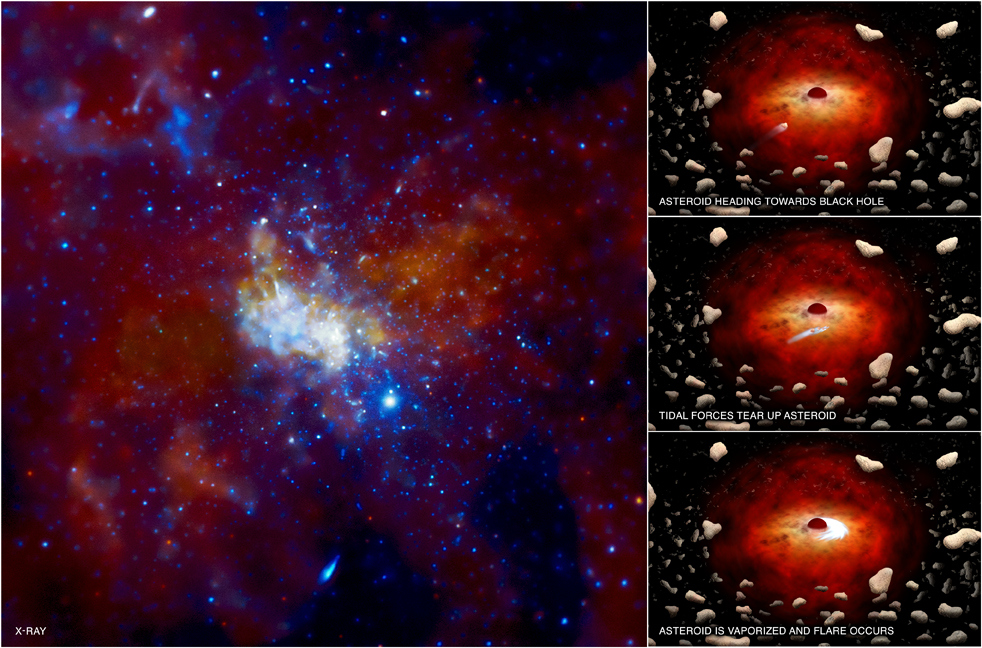
Scientists studying a supermassive black hole around 800 million light-years from Earth say they caught it ‘belching’ — blasting out jets of bright light — after ingesting hot gas.
The team, led by University of Colorado Boulder researchers, was fortunate to catch the black hole in the act, as the action has rarely been seen before as a result of gas feeding. They also saw a remnant of a previous black hole belch, which occurred around 100,000 years before the second.
The Hubble Space Telescope and the Chandra X-ray Observatory, along with observatories in Hawaii and New Mexico, were used to make the observation.
“Black holes are voracious eaters, but it also turns out they don’t have very good table manners,” said the study’s lead author, CU Boulder Assistant Professor Julie Comerford, during a news conference on Jan. 11, according to Space.com. “We know a lot of examples of black holes with single burps emanating out, but we discovered a galaxy with a supermassive black hole that has not one but two burps.”
The team presented its rare findings in a paper published in The Astrophysical Journal.
More Must-Reads From TIME
- The 100 Most Influential People of 2024
- Coco Gauff Is Playing for Herself Now
- Scenes From Pro-Palestinian Encampments Across U.S. Universities
- 6 Compliments That Land Every Time
- If You're Dating Right Now , You're Brave: Column
- The AI That Could Heal a Divided Internet
- Fallout Is a Brilliant Model for the Future of Video Game Adaptations
- Want Weekly Recs on What to Watch, Read, and More? Sign Up for Worth Your Time
Write to Kate Samuelson at kate.samuelson@time.com